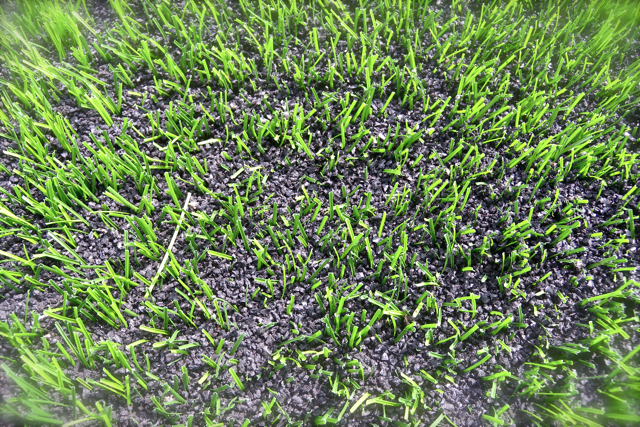Look Into the Environmental Conveniences of Opting for Artificial Grass Solutions
The fostering of artificial lawn services presents an engaging opportunity to resolve pressing environmental difficulties. By substantially decreasing water use and reducing the application of unsafe chemicals, these alternatives not just promote lasting landscaping yet also secure neighborhood ecosystems.
Water Preservation Advantages
One of the most considerable advantages of synthetic grass is its capacity to conserve water. In contrast, artificial grass does not require watering, dramatically decreasing the total need for water resources.
By getting rid of the need for regular watering, synthetic grass contributes to lasting landscape methods and assists reduce the ecological influence of extreme water intake. Moreover, the preservation of water reaches the reduction of runoff, which can lead to dirt disintegration and river pollution.
In addition, the setup of synthetic grass permits house owners and districts to allot water resources much more efficiently, concentrating on necessary usages such as drinking water and farming. The shift towards synthetic turf not just advertises responsible water usage yet likewise straightens with more comprehensive ecological goals aimed at protecting natural deposits.
As communities increasingly focus on sustainability, the water conservation benefits of synthetic grass provide an engaging case for its fostering in domestic and commercial landscaping projects.
Lowered Chemical Use
The shift to artificial grass substantially reduces the dependence on chemical treatments typically made use of in all-natural grass maintenance. Standard grass monitoring generally involves the application of chemicals, fertilizers, and herbicides to advertise development and control parasites. These chemicals can present risks to human wellness, neighborhood wild animals, and the environment, adding to soil and water contamination.
In comparison, man-made turf gets rid of the demand for these harmful materials. By reducing the launch of artificial substances into the community, fabricated grass advertises much healthier soil and water systems.
Additionally, the lack of chemical drainage connected with synthetic grass installations aids protect regional waterways from pollution, sustaining water life and maintaining biodiversity. Artificial turf companies phoenix. As communities significantly prioritize lasting techniques, choosing synthetic grass provides a practical remedy that lines up with ecological preservation goals. Through this change, home proprietors can appreciate lavish green rooms without endangering environmental wellness, leading the way for a much more lasting future
Reduced Carbon Footprint

In addition, the setup of man-made grass can cause significant water preservation. Natural yards call for significant amounts of water for watering, which not only includes in the carbon impact linked with water removal and treatment but also stress local water sources. In comparison, synthetic grass needs marginal upkeep, needing no watering, therefore significantly minimizing water usage and its connected power costs.
In addition, the durability of synthetic grass contributes check my source to its decreased carbon impact. With a life expectancy of as much as 15 years or even more, the need for regular substitutes is lessened, resulting in less waste and reduced energy intake in production and taking care of typical turf options. On the whole, synthetic grass offers a lasting alternative for environmentally mindful landscape design.
Habitat Preservation
Habitat preservation is an important factor to consider in the dispute over landscape design selections, especially when contrasting synthetic grass to all-natural turf. Natural lawn yards commonly call for comprehensive maintenance, including the usage of plant foods, herbicides, and pesticides, which can adversely affect local environments. These chemicals can leach into the soil and waterways, damaging native flora and animals and disrupting regional environments.
In contrast, synthetic turf presents a chance to decrease the eco-friendly impact of landscape design. By selecting artificial turf, property owners can reduce the disruption visit homepage of all-natural habitats related to typical yard treatment methods. Synthetic grass eliminates the demand for damaging chemicals, thus shielding nearby wild animals and preserving the integrity of surrounding environments. The installment of artificial lawn can lead to the conversion of previous grass areas right into more biodiverse landscapes, such as pollinator yards or native plant locations, which can sustain neighborhood wild animals.
Ultimately, the transition to man-made turf not only conserves water and reduces upkeep initiatives but also fosters a more unified connection between human tasks and the native environment, advertising habitat preservation while doing so.
Long-Term Sustainability
Lasting sustainability is an essential consider evaluating the benefits of synthetic grass over standard turf lawns. Among the most significant advantages of synthetic grass is its longevity; it can last as much as 15-20 years with very little maintenance, whereas natural yard needs regular reseeding and replacement. This durability lowers the demand for consistent resources, such as water, fertilizers, and pesticides, which are essential for keeping a healthy and balanced grass yard.
Furthermore, synthetic grass adds to a reduction in carbon discharges connected with grass treatment devices. Typical lawns frequently need gas-powered lawn mowers, trimmers, and blowers, every one of which contribute to air pollution. Artificial turf companies phoenix. In comparison, synthetic grass removes the requirement for such equipment, advertising a cleaner atmosphere
Additionally, the production of synthetic grass progressively utilizes recycled materials, enhancing its sustainability account. As producers take on Phoenix turf companies eco-friendly practices, the environmental impact of synthetic grass remains to diminish.

Final Thought
The adoption of synthetic lawn remedies presents considerable environmental benefits, consisting of significant water preservation, lowered reliance on hazardous chemicals, and a lower carbon footprint. Fabricated turf aids in maintaining natural environments by minimizing land disruption and advertising long-lasting sustainability through the use of long lasting products. Collectively, these variables emphasize the potential of synthetic grass to contribute positively to ecological wellness and use a sensible choice to conventional landscape design practices in a significantly resource-conscious globe.
In contrast, man-made turf does not need watering, considerably lowering the general demand for water sources. By minimizing the launch of artificial compounds right into the community, fabricated grass advertises healthier dirt and water systems.
Additionally, the installment of synthetic turf can result in substantial water conservation. In contrast, man-made lawn needs marginal maintenance, requiring no watering, therefore considerably reducing water use and its linked power prices.
